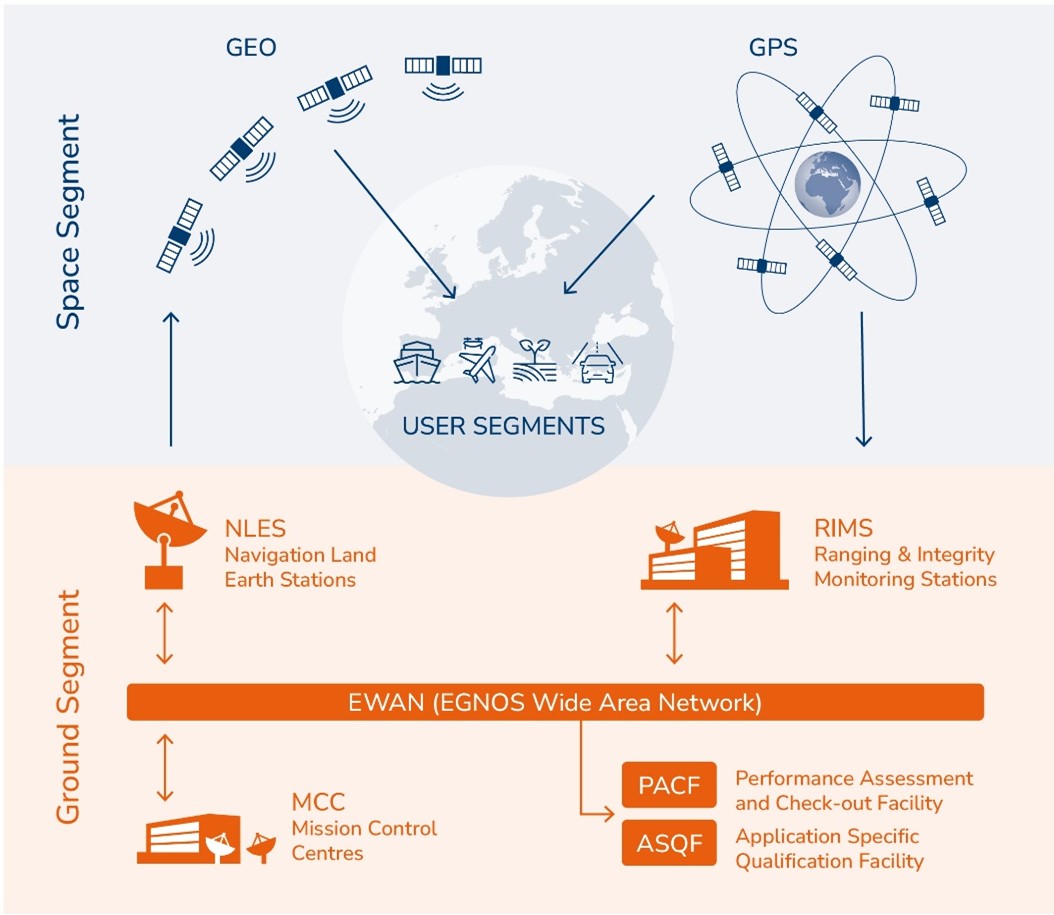EGNOS
Today, EGNOS uses a set of geostationary satellites and a network of ground stations to increase the accuracy of GPS. A new, more powerful system called ‘EGNOS V3’ is currently under preparation. It will strengthen both Galileo and GPS signals, resulting in an even better user experience.
As a regional navigation satellite system, EGNOS’ coverage is limited to Europe and some neighborhood countries.
How EGNOS works
Ground stations deployed around Europe acquire signals from GPS (and, tomorrow, from Galileo), which are then gathered and processed through a central computing system. Here, differential corrections and integrity messages are calculated. These messages are then broadcast back to users across Europe via a set of three geostationary satellites.
As a result, EGNOS improves the accuracy of GNSS positioning information while also providing a crucial integrity message which allows the user to get an extremely reliable guarantee on its residual positioning errors (both horizontal and vertical). In addition, EGNOS signals provide the users with a very accurate synchronization to the UTC time.
Benefits
EGNOS is essential for applications where accuracy and integrity are critical, such as aviation. In fact, since its certification for use in civil aviation in 2011, EGNOS has become an important aid in the European aviation sector, increasing both the safety and accessibility of airports in general and, in particular, small and regional airports and airfields. Thanks to the accurate and safe guidance offered by the system everywhere and anytime in Europe, pilots are better positioned to land in challenging weather conditions, including poor visibility and storms, and avoid aborted landings (go-arounds).
Maritime users are also widely using EGNOS for harbor entrances, harbor approaches and coastal waters in the EU.
Beyond these sectors, EGNOS improves and extends the scope of GNSS applications in numerous market segments, including road, rail, surveying, mapping, location-based services and agriculture – to name only a few.
Infrastructure
The EGNOS infrastructure is comprised of:
- A ground network of about 40 ranging and integrity monitoring stations (RIMS)
- 6 navigation land earth stations (NLES)
- 2 mission control centres
- An Operations Coordination Center and a Service Centre
- Signal transponders on 3 geostationary satellites operated by SATCOM service providers

Governance
EGNOS is owned by European Union citizens. The European Commission took over ownership of the EGNOS infrastructure from the European Space Agency (ESA) on behalf of the European Union on 1 April 2009. Since 1 January 2014, the European Commission fully delegated the exploitation of EGNOS to EUSPA.